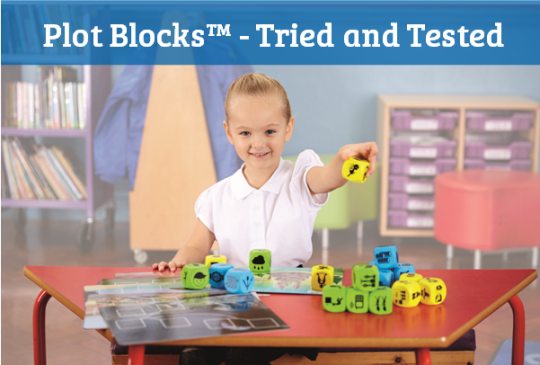
Activities and Tips to Develop Speech and Language Skills
- Learning Resources Posted On Aug 5, 2021 | Early Years
Speech and language underpin everything we do. Building these skills allow us to interact with the world, build relationships, and convey feelings. Adults play a critical role in supporting the development of these skills in children by creating language rich, stimulating environments.
Young brains are like sponges and want to soak up essential skills every day. By creating opportunities to interact and explore with others, children can practise language skills and share experiences that are essential for attachment, bonding, and nurturing.
Whether your child is preschool or primary school, you’ll find fun activities and tips to develop speech and language skills.
Before you get started with any activities, you’ll find your child is able to give the activities their full attention where they’re able to focus. To help your child get the most out of any learning activities:
- Minimise background noise such as televisions and radios.
- Bend down to their level during play and follow your child’s lead.
- Don’t use over complicated language.
- Speak slowly and clearly, making sure your mouth is visible during conversations.
- Repeat words and phrases to build understanding.
- Use gestures to help convey meaning.
- Expand on their vocabulary by repeating their sentences with more words.
- Give your full attention to conversations started by your child.
- Pause after speaking to give your child the chance to continue the conversation.
- Make every experience a language learning opportunity.
How imaginative play helps
Imaginative play scenarios offer great opportunities to feed in language and encourage creative play. Try swapping roles with your child and letting them take the lead. If you are role-playing a classroom environment, let your child be the teacher. This will build their confidence and help develop their social skills as they use eye contact, turn-taking and listening skills. Try to input four comments to every one question, this will keep the dialogue flowing and provoke fuller responses.


Try this: Our Pretend & Play® Original School Set is a timeless classic and ideal for encouraging children to play out their emotions and ideas.
Try a tactile approach
Using a sculpting resource like award-winning Playfoam is a fun way to engage their senses and encourage conversation and language development. Use Playfoam® to sculpt a word and then see how many sentences you and your child can use it in.
Kelly Anne from the blog Mimi Rose and Me offers this fun idea: “As my daughter moulded her Playfoam into little sausages I would talk to her about each letter and even sound them out. Not only is it great for letter recognition but excellent for practising their fine motor skills.”


Let me see myself!
Mirror play helps children to visualise mouth movements when making particular sounds. Encourage children to hold a mirror up to their face and make sounds such as ‘p’ and ‘m’. Articulate each sound slowly to model proper positioning and show the differences in the mirror.


Try this: Our See My Feelings Mirror is ideal for helping children learn about facial expressions and emotions. Use it to help with speech and language skills, too.
Use positional language
Build vocabulary and understanding of prepositions with positional word games. Examples of positional words include:
- Near
- Off
- In
- Top
- Over
- Right
- Front
- Below
- Beside
Positional words help children to:
- Follow and give directions.
- Expand, use, and understand new vocabulary.
- Describe the exact location of an object.
- Build recognition of sight words.
- Enhance beginning reading and writing skills.
- Develop spatial awareness.
Try this: Fox in the Box Activity Set incorporates wordplay with following directions, learning positional words, opposites and rhyming to help build important early reading, writing and language skills. Players select a positional word by spinning the spinner and place picture cards in the correct location i.e. ‘below the tree’. Game play can be adapted to suit auditory, kinaesthetic, and visual learners.
Play travel games
Speech and language can be practised almost anywhere. Make the most of travel time by playing simple games that encourage interaction and conversation. They’re also a great way to keep kids occupied on a long journey. Try these on your next road trip:
- I Spy
- Registration plate challenge
- Guess the character
Reading books
Speech and language are closely linked to reading skills. In order to read well you need to be able to speak and understand language. Incorporate reading into your daily routine and create excitement around choosing a new story to read. As you are reading, make comments and observations to spark conversations about the characters and the storyline. Make sure to explain the meaning of unfamiliar words and try to repeat them in different contexts.
Try this: It can be tough to find time in modern family life, but even 10 minutes a day makes a difference. Read more on the top tips for reading at home.
Do categorising activities
Categorising objects encourages strategic thinking and descriptive language. Playing with sorting sets create opportunities to discuss shapes, colours and textures whilst aiding the development of fine motor skills.


Try this: The Sorting Surprise Pirate Treasure offers lots of ways to p, sort, play, and learn.
Make feely bags
Create your own ‘feely bag’ using a variety of items such as counters, mini figures, and play food. Try to include as many textures as possible to incorporate sensory exploration into the activity. Ask your child to feel inside the bag and describe an item before taking it out of the bag and discovering what it is. This activity is a great way to encourage thinking skills and encourage descriptive and expressive language. Ask open ended questions to prompt deeper responses such as ‘how many ways could you use this object?’
Photo cards
Use photo cards to introduce new topics and prompt discussion. Cards that don’t have distracting backgrounds are the most effective for this kind of activity. If your photo card shows a picture of an animal, you could use it to:
- Ask questions about the animal’s features and habitat.
- Spark story-telling.
- Practise phonological awareness i.e. “what sound does it start with?”.
- Play memory games by covering the card up and asking about what was on it.
“I have not seen anything like this before. They will certainly be a staple in my kit bag!” - Belinda Robertson, Speech & Language Therapist
Action songs and rhymes
Music and communication are closely linked and can have a profound effect on a child’s ability to learn. Music and rhymes can be motivating, familiar and stimulate a variety of senses! By singing to or with your child you will be helping to develop skills such as:
- Maintaining concentration
- Anticipating what’s coming next
- Turn taking
- Nonverbal communication and eye contact
- Vocabulary development
- Sentence development
- Phonological awareness
- Pronunciation and articulation
- Sequencing
- Listening
Try to incorporate visual cues and gestures into songs to help to reinforce meaning. When a word is repeated try and leave a pause to let your child fill in the missing word.
Browse our literacy resources for more speech and language inspiration and ideas. Storytelling is another fun way to develop speech and language skills in your child. Read up on these simple storytelling tips for parents.













